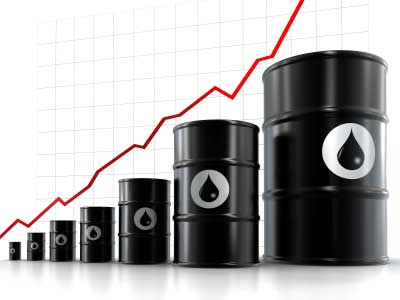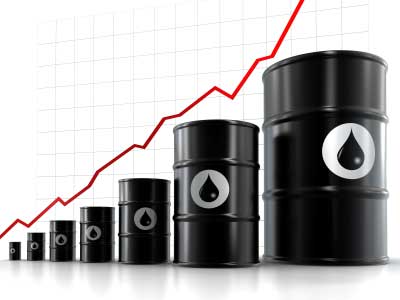
Even as persistent global oversupply and Iran's plans to boost production put a cap on gains, there was a rise in the crude oil futures rose on Wednesday hinging on hopes for an agreement among exporters to freeze output underpinned the market.
After Kuwait said there were "positive indications an agreement will be reached" on output during a producer meeting scheduled for April 17 in Qatar, oil futures recovered from one-month lows to end the previous session up.
Trading at $37 per barrel at 1115 GMT, the U.S. crude futures CLc1 rose more than a dollar or 3 percent. On the other hand, trading at $38.77 a barrel the International benchmark Brent futures LCOc1 rose as much as 90 cents.
"Oil (futures) gained some momentum. The comment by the Kuwait OPEC governor provided some support to prices," ANZ bank said. However the bank also sounded caution for the investors and keep an eye open for the results and development of the April 17 meeting.
Russia wanted to deepen cooperation with OPEC to help the market rebalance faster while seeing prices at around $45-50 a barrel as acceptable, reported Reuters quoting sources familiar with the output freeze plan.
A few days after the Doha meeting, OPEC's most influential oil minister, Saudi Arabia's Ali al-Naimi, will be traveling to Moscow for a conference and possibly to discuss the future of the Doha meeting.
With the aim of discussing the freeze and other methods to bolster crude prices, Latin American producers Colombia, Ecuador, Mexico and Venezuela will meet among themselves before the Doha meeting.
Oil prices have been helped to rise from a 12-year low close to $27 a barrel seen in January by an initial output freeze agreed in February. There have however been doubts about the possibility of a wider deal will be reached, largely because Iran has so far said it has no intention of slowing its production after crippling sanctions against it were lifted in January. This has resulted in a fall in the prices in recent days.
A large rise in oil prices was not necessarily on the anvil even if the freeze deal were reached this month according to a World Bank official as reported in some sections of the media.
Iranian state television reported on Wednesday that the country had plans to export 2.25 million bpd of crude oil and quoted the Oil Minister Bijan Zanganeh as saying that the crude output would reach 4 million barrels per day (bpd) by March 2017. This target set by Iran would only slightly be below pre-sanctions peaks of 2.5 million bpd and would be up from exports of as little as 1 million bpd under the sanctions.
(Source: www.reuters,com)
After Kuwait said there were "positive indications an agreement will be reached" on output during a producer meeting scheduled for April 17 in Qatar, oil futures recovered from one-month lows to end the previous session up.
Trading at $37 per barrel at 1115 GMT, the U.S. crude futures CLc1 rose more than a dollar or 3 percent. On the other hand, trading at $38.77 a barrel the International benchmark Brent futures LCOc1 rose as much as 90 cents.
"Oil (futures) gained some momentum. The comment by the Kuwait OPEC governor provided some support to prices," ANZ bank said. However the bank also sounded caution for the investors and keep an eye open for the results and development of the April 17 meeting.
Russia wanted to deepen cooperation with OPEC to help the market rebalance faster while seeing prices at around $45-50 a barrel as acceptable, reported Reuters quoting sources familiar with the output freeze plan.
A few days after the Doha meeting, OPEC's most influential oil minister, Saudi Arabia's Ali al-Naimi, will be traveling to Moscow for a conference and possibly to discuss the future of the Doha meeting.
With the aim of discussing the freeze and other methods to bolster crude prices, Latin American producers Colombia, Ecuador, Mexico and Venezuela will meet among themselves before the Doha meeting.
Oil prices have been helped to rise from a 12-year low close to $27 a barrel seen in January by an initial output freeze agreed in February. There have however been doubts about the possibility of a wider deal will be reached, largely because Iran has so far said it has no intention of slowing its production after crippling sanctions against it were lifted in January. This has resulted in a fall in the prices in recent days.
A large rise in oil prices was not necessarily on the anvil even if the freeze deal were reached this month according to a World Bank official as reported in some sections of the media.
Iranian state television reported on Wednesday that the country had plans to export 2.25 million bpd of crude oil and quoted the Oil Minister Bijan Zanganeh as saying that the crude output would reach 4 million barrels per day (bpd) by March 2017. This target set by Iran would only slightly be below pre-sanctions peaks of 2.5 million bpd and would be up from exports of as little as 1 million bpd under the sanctions.
(Source: www.reuters,com)














